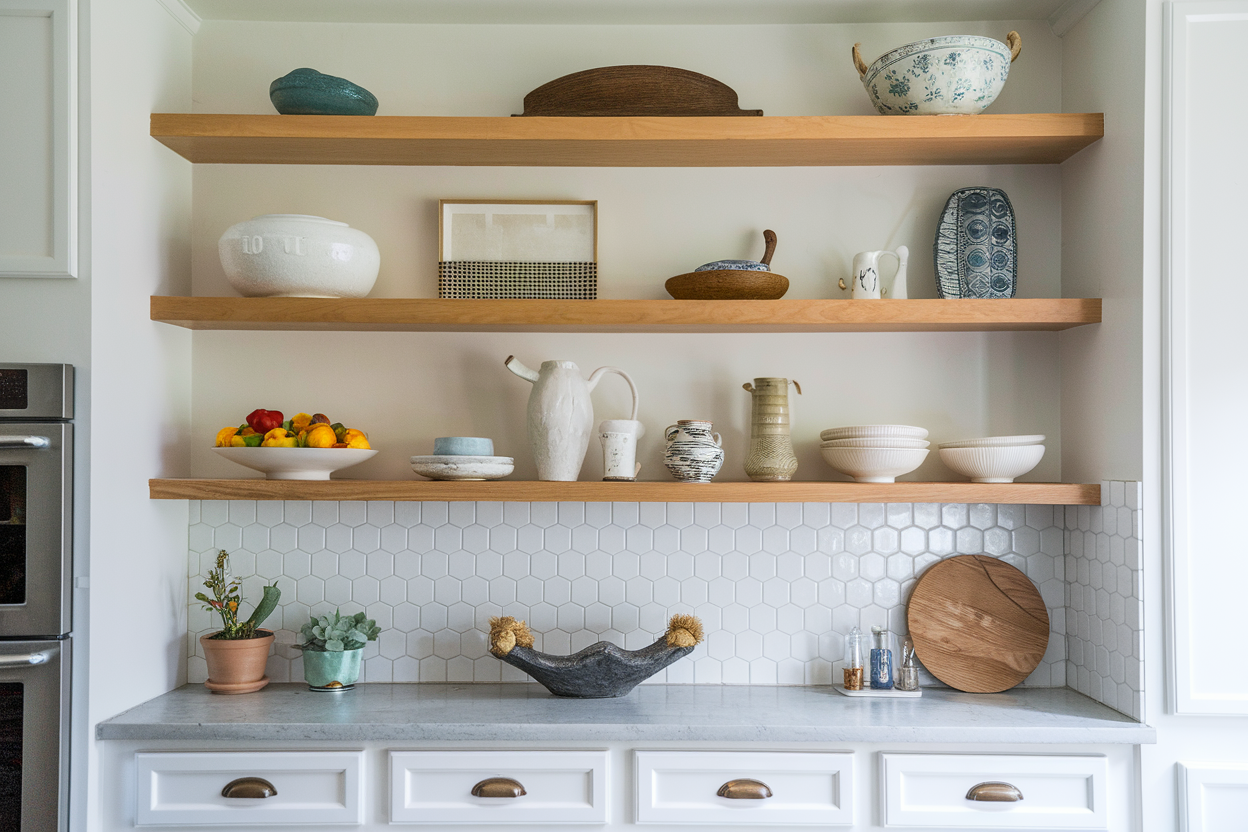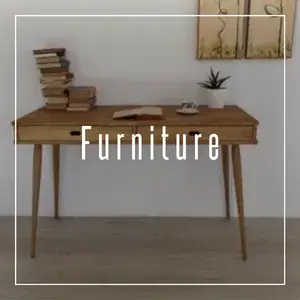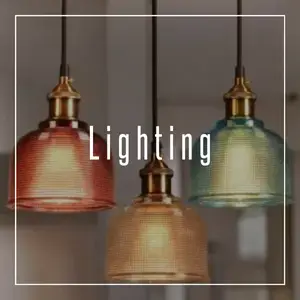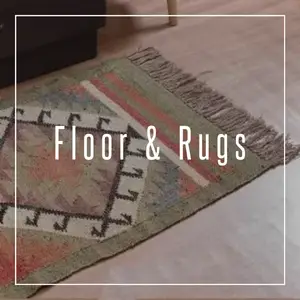Open shelves are a popular design trend that combines functionality with aesthetics. Whether in your kitchen, living room, or bedroom, they offer a versatile way to display your favorite items while keeping them easily accessible. However, styling open shelves can be tricky—finding the right balance between practicality and style is key. This ultimate guide will help you master the art of styling open shelves, turning them into a beautiful focal point in your home.
1. Start with a Clean Slate
Before you begin styling, start with a blank canvas:
- Clear Everything Off: Remove all items from the shelves so you can see the space you’re working with.
- Clean the Shelves: Dust and wipe down the shelves to ensure they’re ready for your decor. Clean shelves provide a fresh start and prevent any distractions from the items you’ll be placing on them.
Starting with a clean slate allows you to visualize the design and ensures that your shelves look their best.
2. Choose a Color Palette
Selecting a cohesive color palette is essential for creating a stylish and organized look:
- Neutral Base: Start with a neutral base for the majority of your items, such as whites, creams, grays, or natural wood tones.
- Pop of Color: Add a pop of color to break up the monotony and add interest. This can be achieved through accent pieces like vases, books, or small decorative items.
- Metallic Accents: Consider incorporating metallics like gold, silver, or copper for a touch of elegance.
Sticking to a color palette helps create a cohesive look and makes your shelves appear curated and intentional.

3. Mix and Match Heights and Sizes
Variety is key when it comes to styling open shelves:
- Layer Heights: Use items of varying heights to create visual interest. Taller items like vases or framed artwork can be placed at the back, while shorter items like candles or small plants can be positioned in front.
- Balance Large and Small Items: Combine large, statement pieces with smaller, detailed items to maintain balance. Avoid placing too many large items together as this can make the shelves feel heavy.
Mixing different heights and sizes adds depth and prevents your shelves from looking too uniform.
4. Incorporate Different Textures and Materials
Adding various textures and materials can make your shelves more dynamic:
- Wood and Wicker: These materials add warmth and a natural element to your shelves.
- Glass and Ceramic: Glass jars, vases, and ceramic pots bring a smooth and polished contrast to rougher textures.
- Fabric: Incorporate fabric elements like a small folded blanket or a fabric-covered box for a soft touch.
Blending textures creates a tactile experience that enhances the overall aesthetic of your shelves.

5. Use Books Creatively
Books are a versatile element for styling shelves:
- Vertical and Horizontal Stacks: Mix vertical rows of books with horizontal stacks. This adds dimension and breaks up the visual lines.
- Color Coordination: Organize books by color for a more cohesive look, or embrace a more eclectic style with mixed spines.
- Display Covers: Prop up a few books with visually appealing covers to showcase them as artwork.
Books not only add color and texture but also give your shelves a lived-in and personal feel.
6. Add Greenery
Plants are an excellent way to bring life to your shelves:
- Small Potted Plants: Use small plants like succulents, ivy, or ferns to add a natural touch. They’re easy to maintain and can fit in tight spaces.
- Trailing Plants: Incorporate trailing plants like pothos or string of pearls to add movement and soften the edges of your shelves.
- Faux Plants: If you’re worried about maintenance, opt for high-quality faux plants that look just as good as the real thing.
Greenery adds a pop of color and a refreshing, organic feel to your shelves.

7. Personalize with Meaningful Items
Your shelves should reflect your personality and interests:
- Family Photos: Display framed family photos or candid shots that evoke happy memories.
- Travel Souvenirs: Showcase souvenirs from your travels, such as small sculptures, postcards, or trinkets.
- Heirlooms: Incorporate meaningful heirlooms or antiques that tell a story and add character.
Personal items make your shelves uniquely yours and add a sense of warmth and identity to your space.

8. Embrace Negative Space
Avoid the temptation to overfill your shelves. Negative space is just as important as the items you place on them:
- Less is More: Leave some areas of your shelves empty to allow your decor to breathe. This prevents your shelves from looking cluttered.
- Groupings: Instead of spreading items evenly across the shelves, group them together in clusters. This creates focal points and keeps the eye moving.
Negative space helps maintain a clean, uncluttered look and ensures that your shelves don’t feel overwhelming.
9. Create Balance and Symmetry
Achieving balance and symmetry can make your shelves more visually pleasing:
- Symmetrical Placement: For a more formal look, arrange items symmetrically on either side of the shelves. This creates a sense of order and harmony.
- Asymmetrical Balance: For a more relaxed and dynamic look, use asymmetry. Balance a large item on one side with a group of smaller items on the other.
Whether you prefer symmetry or asymmetry, balance is key to creating a visually appealing arrangement.
10. Update Seasonally
Refresh your shelves throughout the year by updating them seasonally:
- Seasonal Decor: Swap out items like candles, vases, and small decor pieces to reflect the current season. Think pumpkins and autumn leaves in the fall or seashells and light fabrics in the summer.
- Holiday Themes: Incorporate holiday-themed decor during special occasions like Christmas, Halloween, or Easter.
Seasonal updates keep your shelves looking fresh and relevant all year round.
Final Thoughts
Styling open shelves is an art that combines creativity, balance, and personal expression. By following these tips, you can create beautifully styled shelves that are both functional and visually appealing. Whether you’re displaying cherished keepsakes, books, or greenery, the key is to make your shelves reflect your style while maintaining a sense of order and harmony.
Also read:






















